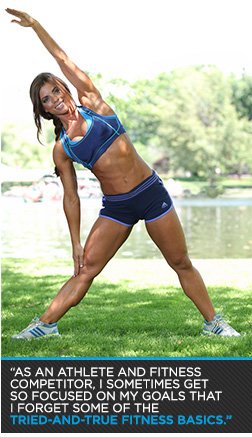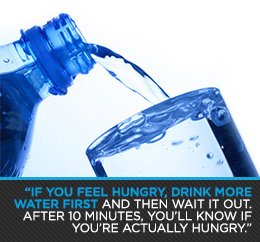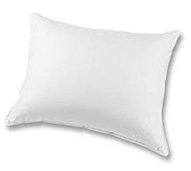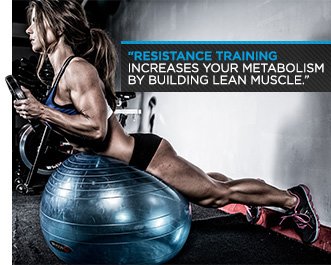6 Secrets Of Recuperation & Overtraining
 You train hard. You eat right. You take supplements religiously. You’ve covered all of your bases, right? Not quite! As athletes, we spend so much time thinking about the design of our workouts and perfection of our dieting and supplementation, but we often neglect the most important component of them all, the period in which muscle recovery and actual growth take place. This time, of course, is known as the recovery period. If you’re not giving your body adequate rest, or you are currently in a state of consistent overtraining, you will never see optimal gains in terms of muscle mass, strength, and definition. Let’s look at a few keys to understanding just how you can bounce back from your workouts faster & more efficiently!
You train hard. You eat right. You take supplements religiously. You’ve covered all of your bases, right? Not quite! As athletes, we spend so much time thinking about the design of our workouts and perfection of our dieting and supplementation, but we often neglect the most important component of them all, the period in which muscle recovery and actual growth take place. This time, of course, is known as the recovery period. If you’re not giving your body adequate rest, or you are currently in a state of consistent overtraining, you will never see optimal gains in terms of muscle mass, strength, and definition. Let’s look at a few keys to understanding just how you can bounce back from your workouts faster & more efficiently!
The science
There are plenty of reasons why you need to take the time to rest after a workout. First and most obvious are the small tears that occur in the muscle fibers during the course of a workout. Your body utilizes amino acids from the protein in foods you consume to rebuild the small tears, just a bit bigger and thicker each time. This is when muscle growth takes place. The fibers are stronger and bigger. Over time, these miniscule changes really add up to some serious new muscle growth. Waste products also need time to break up and dissipate from the region. Time and plenty of water helps with that. Finally, glycogen restoration needs to take place. The carbs you eat deliver the sugars to replenish your stores in your muscles. Training nonstop, particularly while using low protein dieting practices, leaves your glycogen low, which leads to sluggishness and a lack of energy in the gym.
Varying rates of recovery
Believe it or not, not all muscle groups are created the same, at least in terms of required recovery ties. For most people with most muscle groups, the peak of soreness will take place about 48 hours after a workout. It stands to reason that at around 72 hours after a workout, the muscle group is typically recovered. That isn’t always the case, however. Biceps are known to be ready for another workout in 24 to 36 hours, as they are the muscle group that recovers the fastest. The lower back is thought to take up to 4 days to recover following each workout. This may be why you are sore from deadlifts long into the weekend, even though you didn’t hit back until Wednesday. Every person will recover differently from their workouts based upon their own genetic makeup and overall level of development.
Level of development
Speaking of level of development, this factor plays a key role and warrants its own discussion! Your early workouts, when you first began training, probably seemed difficult at the time. Despite this, you were usually probably back in the gym after a days’ rest, ready to blast chest and biceps once again. As time passed and you learned to better organize your workouts, you probably soon discovered that you actually needed longer to recover. Why would this be the case? Aren’t you supposed to get into better shape with time, thus requiring less time to recover? The more advanced a bodybuilder you become, the sorer you will be following each workout. Your workouts, whether you have noticed or not, have become much more intense, constructive and difficult, meaning the muscle fibers now require more recovery time. Look at the good news – you’ve learned to train more effectively. The bad news is that your body needs more time to recover from tougher workouts. Accept it as just part of the growing process!
During workout rest
A tricky balance takes place between the sets of each workout that is almost always overlooked by athletes. The amount of time you take resting between sets will have a great effect upon the amount of time you’ll need to recover from your workouts in the days following training. The shorter the break, the greater the intensity, thus the longer you will need to recover. In those workouts where you goof off and rest for 4 to 6 minutes between sets, you aren’t going to be all that sore. However, you are also going to be much less effective in reaching your goal of stimulating the muscle fibers at an adequate level. Rest just long enough for your heart rate to return to normal, then get back on the iron!
Nutrient stream
In order to recover the systems and muscle fibers, you need to give your body the building blocks it needs. As mentioned, carbohydrates give the body the fuel it needs to glycogen replenishment, as well as the energy needed just to train. Protein delivers the building blocks of muscle, amino acids. You also need fiber to move the food through your body. Toss in the many micronutrients such as vitamin E and C for immune system recovery, since we all know that tough workouts can leave your immune system quite weak. One quickly discovers how important a well-balanced diet really is, when it comes to building muscle and bouncing back quickly from tough workouts.
Sleep
Finally, if you want to grow, you have to sleep. The typical untrained person required 7 to 8 hours of sleep. You’re doing a lot more work than the average person, right? While your body might not be used to more sleep, it may quickly be requiring it, once you subject your system to a brutally tough series of workout. Open up your schedule so you have up to 8.5 or even 9.0 hours of sleep or rest time available each evening. Start laying down an hour earlier than usual, and just let your body choose when to enter the sleep arena. Avoid stimulants that can keep you up at night. Stick with water and milk in the final hours of the day to ensure you sleep right.
Lifting and eating right are important, but they won’t develop your body to its maximum potential if you fail to give yourself the needed resources for recovery. Rest as much as needed and ensure that your rest days are just that – for resting. Beyond that, consistency and patience are all that is needed to develop your physique to its ultimate potential!
6 Secrets Of Recuperation & Overtraining Read More »


 1. The apple is king
1. The apple is king






 If you only use apple cider vinegar on your salad, you’re seriously underestimating its potential. Raw, unfiltered apple cider vinegar (often abbreviated as ACV) can be used in so many ways that by the end of this article you may start keeping a bottle in every room of your house, not just the fridge! You can use apple cider vinegar for hair and skin care, household cleaning, healing and cooking.
If you only use apple cider vinegar on your salad, you’re seriously underestimating its potential. Raw, unfiltered apple cider vinegar (often abbreviated as ACV) can be used in so many ways that by the end of this article you may start keeping a bottle in every room of your house, not just the fridge! You can use apple cider vinegar for hair and skin care, household cleaning, healing and cooking.
